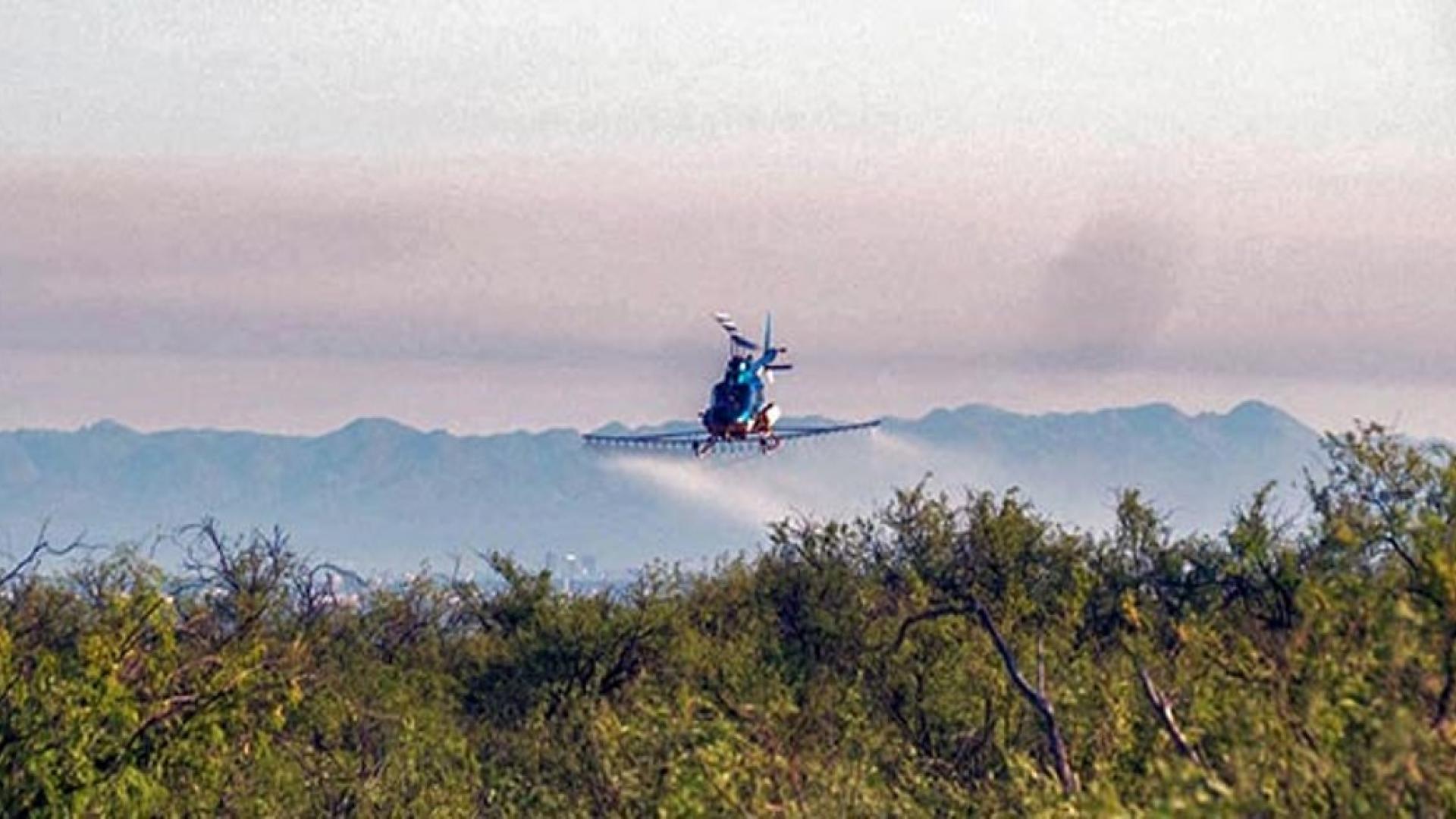
- Written by Austin Rutherford, University of ArizonaBody
Efficacy of brush management via chemical methods can vary depending on target species and application conditions. This information is meant as a brief, general introduction into the method itself with no herbicide warranty or guarantee, express or implied. Always read and follow instructions provided on the herbicide label, and please consult the herbicide manufacturer and/or your local Cooperative Extension Agent for additional guidance.
Managing brush with herbicides can be one of the more cost-effective options compared to other methods (e.g., biological, mechanical, cultural). Available funding aside, herbicides may be the only management option depending on site access for machinery, presence of sensitive archeological resources, and fuel resources to carry a prescribed fire. When the decision has been made to apply herbicide for brush management, the number of trees or shrubs per acre (or stems/acre) is a helpful metric in estimating costs. Secondly, the mode of application to meet the herbicide treatment goal should be considered. The most common herbicide treatment methods are Individual Plant Treatment (IPT) and broadcast/aerial application. IPT is typically used for small acreage treatments or for maintenance/follow-up of a larger brush treatment with backpack sprayers, UTV/ATV-mounted sprayers, or by cut-stump and/or basal bark application methods. Broadcast applications are used in landscape-level treatments with the use of aircraft or heavy machinery/tractors to apply herbicide quickly over a large area. When using a sprayer, appropriate nozzle size selection and application rate calibration is needed to ensure the approved, safe amount and coverage of herbicide is applied.
Herbicides can be in liquid, powder, and pelletized forms depending on target species and selected application methods (e.g., IPT vs broadcast). The most common herbicides used to treat brush specifically are triclopyr, picloram, tebuthiuron, and clopyralid. When in liquid form, these herbicides can be used individually or in a mixture to maximize treatment efficacy. Applicators often mix herbicides with oil-based additives to increase herbicide-plant contact and ensure thorough plant coverage. Each shrub and tree species may react differently to a particular herbicide and formulation, where specific formulas may already exist to match the herbicide(s) to the target brush species. With the soil, climate, and plant community variation on rangelands, land managers and owners are encouraged to reach out to their local Weed Management Area and county Cooperative Extension agents for species-level herbicide guidance.
For more detailed information on herbicides, see the Herbicides topic page.
Related Resources
Videos
Mesquite & Mixed Brush Herbicide Treatments
Dr. Bob Lyons, Texas A&M Professor and Extension Specialist, discusses the various methods for managing mesquite including aerial and ground broadcast spraying, individual plant stem and leaf treatment techniques, mechanical options, and prescribed burning.
Brush Control Basics and Resources
James Jackson, Texas A&M Extension Program Specialist, reviews the proper techniques for mixing herbicides, calibrating sprayers, and conducting stem and cut-stump treatments to control noxious brush plants.
SRER Brush management, Aerial herbicide application, June 2016
Aerial herbicide application as part of the brush management project on the Santa Rita Experimental Range funded by USDA-NIFA.
Using Coated Fertilizer for Herbicide Control
Brian Pugh, Northeast Area Agronomist with Oklahoma State University Extension, answers questions about using coated fertilizer for herbicide control with Nathan Anderson, Payne County Extension Educator.
Tools
- University of Arizona Cooperative Extension's easy to use platform to investigate potential species based on site characteristics and management…
- PESTMAN provides management support for brush and weed control for species common to TX and NM. Developed by the Texas A&M AgriLife and New Mexico…
- This publication provides general suggestions for herbicides used to control brush and weeds on Texas rangelands. It also gives information on the lev…
- This tool and publication provides an introduction and overview of a decision-making process called Ecologically-Based Invasive Plant Management (EBIP…
Featured Resources From the Database
- Journal Issue/Article
Herbicides have been widely used to manage woody vegetation, but quantification of their effects is often lacking. We documented the impacts of a commonly used clopyralid + …
- Journal Issue/Article
Several studies have examined the impact of woody plant (i.e., brush) management efforts on mesquite (Prosopis glandulosa Torr.) cover and associated ecological impacts, but little…
- Journal Issue/Article
Abstract not available
- Journal Issue/Article
Abstract not available
- Technical Report
Chemical Control of Trees and Brush
Additional Links
- Find your Cooperative Weed Management Area
- US Forest Service Herbicides, Trade Names, and Target Species List
- US Bureau of Land Management Approved Herbicides (Updated: April 4, 2019)
- US Environmental Protection Agency Herbicide Resources
- US Fish and Wildlife Service Managing Invasive Plants: Chemical
- Oklahoma State University Extension: Weed Control on Rangelands
Further Reading
- Collaborative Conservation and Adaptation Strategy Toolbox
- Herbicide Treatment of Western Honey Mesquite in Texas Grasslands
- Brush Treatment for Grassland Restoration as Part of an Adaptive Management Framework in the Cienega Creek Watershed
- Assessing the Impacts of Brush Management on Herbaceous Diversity and Primary Production in Southern Arizona Grasslands
- Over 30 Years of Brush Management on the Elkhorn Ranch
- Greer, Howard. "Guide to effective weed control." Oklahoma State University Cooperative Extension Fact Sheet PSS-2750.
- Umeda et al. "Clear up the confusion: Know how to select the appropriate herbicide to control weeds." (2021) University of Arizona Cooperative Extension Fact Sheet AZ1914.